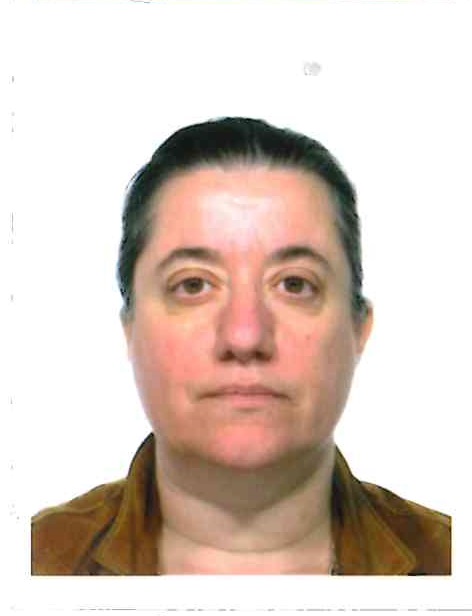Studying at the University of Verona
Here you can find information on the organisational aspects of the Programme, lecture timetables, learning activities and useful contact details for your time at the University, from enrolment to graduation.
Academic calendar
The academic calendar shows the deadlines and scheduled events that are relevant to students, teaching and technical-administrative staff of the University. Public holidays and University closures are also indicated. The academic year normally begins on 1 October each year and ends on 30 September of the following year.
Course calendar
The Academic Calendar sets out the degree programme lecture and exam timetables, as well as the relevant university closure dates..
| Period | From | To |
|---|---|---|
| 1° periodo lezioni (1A) | Sep 15, 2022 | Oct 27, 2022 |
| 1° periodo lezioni (1B) | Nov 4, 2022 | Dec 16, 2022 |
| 2° periodo lezioni (2A) | Feb 13, 2023 | Mar 25, 2023 |
| 2° periodo lezioni (2B) | Apr 3, 2023 | May 23, 2023 |
| Session | From | To |
|---|---|---|
| Prove parziali 9/12 CFU - Prove finali 6 CFU del periodo 1A | Oct 28, 2022 | Nov 3, 2022 |
| 1° appello invernale - dicembre 2022 | Dec 17, 2022 | Dec 23, 2022 |
| Sessione invernale - 2 appelli | Jan 9, 2023 | Feb 11, 2023 |
| Prove parziali 9/12 CFU - Prove finali 6 CFU del periodo 2A | Mar 27, 2023 | Apr 1, 2023 |
| Appello riservato a studenti fuori corso | Mar 27, 2023 | Apr 1, 2023 |
| Sessione estiva - 3 appelli | May 24, 2023 | Jul 26, 2023 |
| Sessione autunnale - 1 appello | Aug 24, 2023 | Sep 16, 2023 |
| Session | From | To |
|---|---|---|
| Sessione autunnale - ottobre 2022 | Oct 20, 2022 | Oct 22, 2022 |
| Sessione invernale - febbraio 2023 | Feb 10, 2023 | Feb 10, 2023 |
| Sessione invernale - aprile 2023 | Apr 26, 2023 | Apr 28, 2023 |
| Sessione estiva - giugno 2023 | Jun 22, 2023 | Jun 24, 2023 |
| Period | From | To |
|---|---|---|
| Tutti i Santi | Nov 1, 2022 | Nov 1, 2022 |
| Festa dell’Immacolata | Dec 8, 2022 | Dec 8, 2022 |
| Vacanze natalizie | Dec 23, 2022 | Jan 8, 2023 |
| Vacanze di Pasqua | Apr 7, 2023 | Apr 10, 2023 |
| Festa della Liberazione | Apr 25, 2023 | Apr 25, 2023 |
| Festa del lavoro | May 1, 2023 | May 1, 2023 |
| Festività Santo Patrono | May 21, 2023 | May 21, 2023 |
| Festa della Repubblica | Jun 2, 2023 | Jun 2, 2023 |
Exam calendar
Exam dates and rounds are managed by the relevant Law Teaching and Student Services Unit.
To view all the exam sessions available, please use the Exam dashboard on ESSE3.
If you forgot your login details or have problems logging in, please contact the relevant IT HelpDesk, or check the login details recovery web page.
Should you have any doubts or questions, please check the Enrollment FAQs
Academic staff
 bernardo.calabrese@univr.it
bernardo.calabrese@univr.it
 ddc4@nyu.edu
ddc4@nyu.edu
 andrea.favaro@univr.it
andrea.favaro@univr.it
 roberto.flor@univr.it
roberto.flor@univr.it
 stefano.gatti@univr.it
stefano.gatti@univr.it
 giorgia.guerra@univr.it
giorgia.guerra@univr.it
 rita.maggi@univr.it
rita.maggi@univr.it
 martina.menon@univr.it
martina.menon@univr.it
 mariafederica.merotto@univr.it
mariafederica.merotto@univr.it
 rosamaria.vadala@univr.it
rosamaria.vadala@univr.it
 isabella.zambotto@univr.it
isabella.zambotto@univr.it
Study Plan
The Study Plan includes all modules, teaching and learning activities that each student will need to undertake during their time at the University.
Please select your Study Plan based on your enrollment year.
1° Year
| Modules | Credits | TAF | SSD |
|---|
Roman Law Institutions
History of Medieval and Modern Law
2° Year activated in the A.Y. 2023/2024
| Modules | Credits | TAF | SSD |
|---|
3° Year It will be activated in the A.Y. 2024/2025
| Modules | Credits | TAF | SSD |
|---|
4° Year It will be activated in the A.Y. 2025/2026
| Modules | Credits | TAF | SSD |
|---|
5° Year It will be activated in the A.Y. 2026/2027
| Modules | Credits | TAF | SSD |
|---|
1 module between the following| Modules | Credits | TAF | SSD |
|---|
Roman Law Institutions
History of Medieval and Modern Law
| Modules | Credits | TAF | SSD |
|---|
| Modules | Credits | TAF | SSD |
|---|
| Modules | Credits | TAF | SSD |
|---|
| Modules | Credits | TAF | SSD |
|---|
1 module between the following| Modules | Credits | TAF | SSD |
|---|
5 modules among the following during the 3rd,4th and 5th year (1 module in the 3rd, 1 module in the 4th, 3 modules in the 5th)Legend | Type of training activity (TTA)
TAF (Type of Educational Activity) All courses and activities are classified into different types of educational activities, indicated by a letter.
Private Law [Matricole dispari] (2022/2023)
Teaching code
4S008439
Teacher
Coordinator
Credits
12
Language
Italian
Scientific Disciplinary Sector (SSD)
IUS/01 - PRIVATE LAW
Period
2nd lecture period (2A), 2nd lecture period (2B)
Learning objectives
The course aims at introducing the students to the knowledge and comprehension of the foundations of private law, i.e. the fundamental concepts and legal rules governing private law relationships between individuals and corresponding remedies. Moreover, the students will familiarize with the methodological tools that are needed to analyse and solve private law cases with success. The students will acquire the ability to analyse and approach, in oral and written form, the basic legal issues concerning private law relationships between individuals and corresponding remedies, as well as to autonomously formulate judgments and arguments, on a basic level, with regard to cases, issues and legal situations submitted to their analysis and to critically adapt them to the changes in the context.
Prerequisites and basic notions
Being a first-year exam, there are no specific prerequisites other than those required to access the Degree Course.
Program
The Private Law in general – The subjective juridical situations – Juridical facts and acts - The subjects: natural person and legal entity – Goods and property rights – The obligation – The contract in general – Special contracts – Consumer contracts – Non-contractual obligations – Torts – The Family Law in general – Marriage – Parent-child relationship – The Law of Succession – Donations – Protection of rights.
Textbooks recommended:
1) one of the following textbooks as an alternative:
A. TRABUCCHI, Istituzioni di diritto civile, 50^ ed., Wolters Kluwer CEDAM, 2022
(excluded the parts regarding insolvency proceedings [Chapter IX, Sec. III], credit instruments and securities circulation [Chapter XII, Sec. IV], intellectual property and competition [Chapter XIII]);
or
A. TORRENTE – P. SCHLESINGER, Manuale di diritto privato, 25^ ed., Giuffrè, 2021
(excluded the parts regarding credit instruments, promissory notes, and cheques [Chapter LI, Section D), Chapter LII and Chapter LIII], companies and insolvency proceedings [Chapter LVI to Chapter LXIV]).
2) It is also recommended the latest edition of a Civil Code which includes, in addition to the main civil laws, the texts of the Constitution and the Treaties of the European Union:
G. DE NOVA, Codice civile e leggi collegate, Zanichelli Editore
A. DI MAJO, Codice civile, Giuffrè Editore
G. PERLINGIERI – M. ANGELONE, Codice civile, Edizioni Scientifiche Italiane
R. PUCELLA, Codice civile. Per la didattica e lo studio, Giappichelli Editore
Didactic methods
The teaching method consists of lectures also aimed at involving attending students in the reasoning process and solution of legal problems.
Learning assessment procedures
The exam takes place in two parts. The first part consists of a 30-minute pre-assessment written test with 20 multiple-choice questions, aimed at verifying the student's minimum mastery of the basic notions of private law. Grades are awarded by assigning 1 point for each correct answer and 0 points for each incorrect or not answered. The test is deemed passed with at least 14 correct answers.
The second part of the exam, an oral interview, provides for a more in-depth assessment of the theoretical and practical knowledge relating to the institutes covered by the program.
An intermediate test is planned.
Evaluation criteria
The following aspects are evaluated: 1) knowledge of the institutions and rules of private law; 2) the ability to to communicate using adequate technical-legal terms; 3) critical reasoning skills.
The outcome of the written pre-assessment test is “admitted/not admitted”. The evaluation of the oral interview is in thirtieths.
Criteria for the composition of the final grade
The final grade is given by the evaluation of the oral exam, which is accessed after passing the pre-assessment test.
Exam language
Italiano
Type D and Type F activities
Le attività che consentono l’acquisizione dei crediti riservati alle attività formative a libera scelta dello studente (TAF D) sono le seguenti:
• Un insegnamento previsto nell’elenco delle attività formative (TAF D) allegato al piano didattico del corso di laurea Magistrale in Giurisprudenza;
• Un insegnamento attivato nei Corsi di studi afferenti al Collegio di Giurisprudenza;
• Un laboratorio didattico attivato nei Corsi di studi afferenti al Collegio di Giurisprudenza;
• Un laboratorio didattico attivato nei Corsi di studi afferenti al Dipartimento di Scienze Giuridiche;
• Un insegnamento previsto dall’Offerta Formativa di Ateneo, non impartito nell’ambito dei corsi di studi afferenti al Collegio di Giurisprudenza: il riconoscimento dei crediti acquisiti sarà subordinato alla preventiva presentazione di coerenti programmi formativi valutati dalla Commissione istruttoria per la didattica e approvati dal Collegio didattico.
• Attività formative organizzate dai singoli docenti del Collegio di Giurisprudenza o del Dipartimento di Scienze Giuridiche: previa approvazione del Collegio ad esse verrà attribuito, dopo un’apposita verifica, un credito per ogni 6 ore di frequenza obbligatoria;
• Attività formative che implicano la partecipazione a convegni o seminari organizzati sotto il “logo” del Dipartimento di Scienze Giuridiche o dell’Ateneo: devono essere preventivamente approvate dal Collegio di Giurisprudenza indicando un docente di riferimento del Collegio di Giurisprudenza ovvero del Dipartimento di Scienze Giuridiche. Un credito per ogni giornata di convegno o di seminario si acquisisce dopo apposita verifica che dimostri l’avvenuta fruizione culturale del tema del convegno o del seminario.
Le attività che consentono l’acquisizione dei crediti riservati alle ulteriori attività formative (TAF F) sono le seguenti:
• Informatica (3 cfu)
• Stage;
• Un laboratorio didattico attivato nei Corsi di studi afferenti al Collegio di Giurisprudenza;
• Un laboratorio didattico attivato nei Corsi di studi afferenti al Dipartimento di Scienze Giuridiche.
Al link Compilazione del piano didattico - Giurisprudenza le informazioni e la modulistica per l'inserimento di attività non selezionabili in autonomia dallo studente in sede di compilazione del piano degli studi.
| years | Modules | TAF | Teacher |
|---|---|---|---|
| 4° 5° | Lab.: Italian mediation competition - preparation (2 cfu) | F | Not yet assigned |
| 4° 5° | Lab.: Cross examination moot - preparazione (2 cfu) | F | Not yet assigned |
| 4° 5° | Roman Law and Civil Law Tradition - Training | F | Not yet assigned |
| 4° 5° | Lab.: Pax Moot competition - Training | F | Not yet assigned |
| 4° 5° | Lab.: Willem c. vis international commercial arbitration moot - preparazione (2 cfu) | F | Not yet assigned |
Career prospects
Module/Programme news
News for students
There you will find information, resources and services useful during your time at the University (Student’s exam record, your study plan on ESSE3, Distance Learning courses, university email account, office forms, administrative procedures, etc.). You can log into MyUnivr with your GIA login details: only in this way will you be able to receive notification of all the notices from your teachers and your secretariat via email and soon also via the Univr app.
Language skills
Graduation
Internships
Internships are aimed at enabling students to gain direct knowledge of the world of work and to acquire specific professional skills.
Internships are carried out under the responsibility of an individual lecturer, and can be carried out in professional firms, public administration bodies and companies recognised by the University of Verona.
Any CFU credits gained by doing internships will be recognised and recorded by the University in accordance with the relevant University regulations in force (Regolamento d’Ateneo per il riconoscimento dei crediti maturati negli stage universitari).
For further information on internships, please go to: https://www.univr.it/it/i-nostri-servizi/stage-e-tirocini.

 +39 045 842 5387
+39 045 842 5387























































